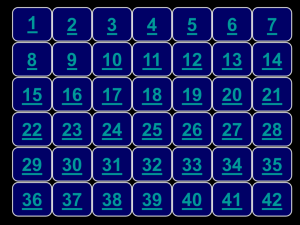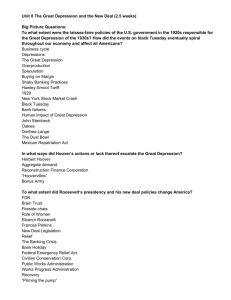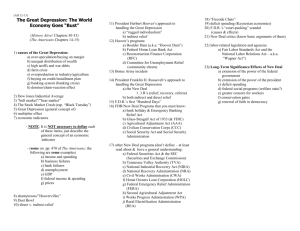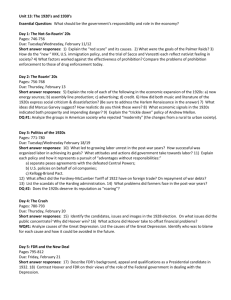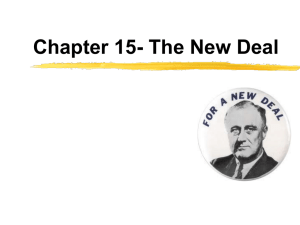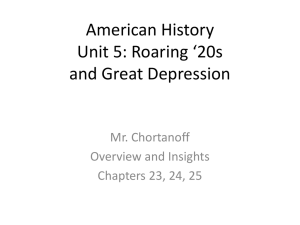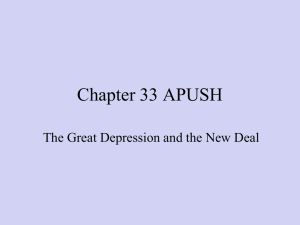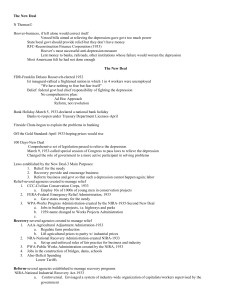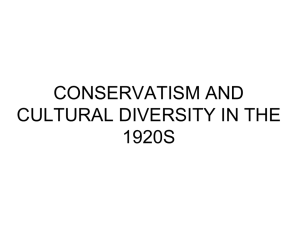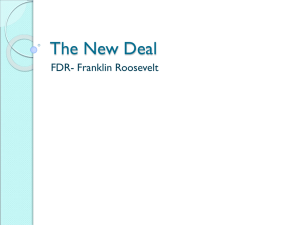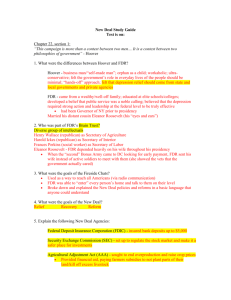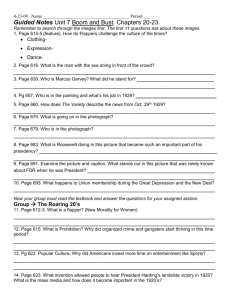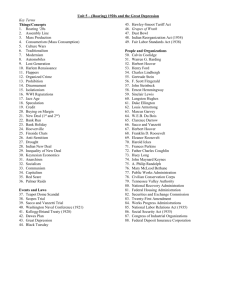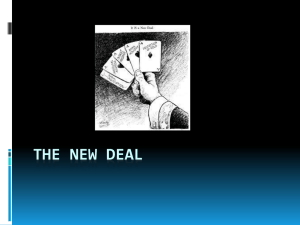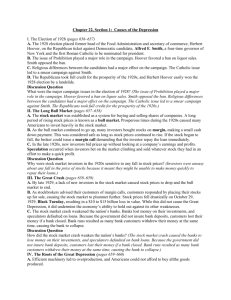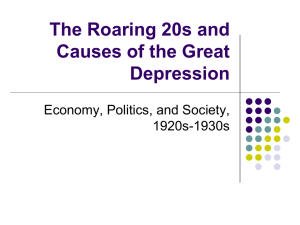Great Depression - Westerville City School District
advertisement
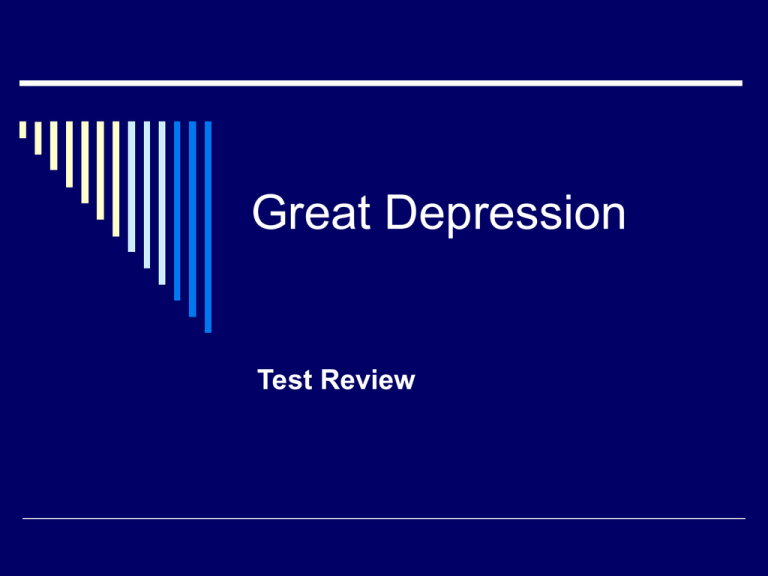
Great Depression Test Review Throughout most of the 1920s, Americans were generally worried that the Stock Market would crash. confident that business would bring continued prosperity. delighted that wealth was evenly distributed. concerned with economic danger signs. One sign that the economy might be weakening in the 1920s was uneven distribution of national wealth. underproduction of consumer goods. an increase in personal savings. the collapse of large corporations. When the Dow Jones Industrial Average began to drop sharply in late October 1929, investors bought record shares of stock. bankers pardoned personal loans and mortgages. President Hoover warned Americans to stop investing. investors raced to get their money out of the stock market. European economies were hurt during the Depression when President Hoover pardoned war debts. Congress lowered tariffs. United States companies stopped investing in Germany. the United States increased its exports. A major environmental crisis of the 1930s was known as the Dust Bowl. the Grapes of Wrath. Black Tuesday. the Great Crash. In 1933 the Twenty-first Amendment brought an end to Prohibition. stock speculation. the Depression. the United States Communist party. The 1932 presidential election served as a turning point in the way Americans viewed presidential elections. the Bill of Rights. the responsibilities of the federal government. local relief programs and private charities. Which of the following was a sign of an unsound economy during the 1920s? Personal debt was decreasing. Wages were keeping pace with production. More goods were being produced than consumers could buy. The Dow Jones Industrial Average was steady How did most investors react to a sudden fall in stock prices in 1929? They called in their loans. They raced to sell their stocks. They pooled money to buy stock. They pledged their stocks as collateral. Which was one effect of the wage cuts and unemployment of the 1930s? The divorce rate nearly tripled. Banks pardoned thousands of farm mortgages. Hoovervilles sprang up in the nation’s cities. Most industries gave top jobs to married women. During the Depression, many African Americans took low-paying jobs previously held by white workers. experienced worsening conditions and discrimination in job and relief programs. returned from northern cities to the South. won new civil rights, such as access to education and health care. President Hoover believed that the best strategy for ending the Depression was encouraging massive government spending. lowering import duties. setting up federal relief programs. encouraging voluntary controls in the business sector. A fundamental disagreement between the candidates in the 1932 presidential election concerned whether or not the Depression existed. the federal government should try to fix people’s problems. Americans should offer aid to European economies. any relief efforts were necessary to ease the economic crisis. Which New Deal agency was created to help businesses? Federal Reserve Board Civilian Conservation Corps National Recovery Administration Home Owners’ Loan Corporation What was the purpose of the Federal Deposit Insurance Corporation? make people deposit money in the bank raise farm prices provide funds to state agencies Insured bank deposits up to $5,000 What was the Second New Deal? a series of tax laws that primarily benefited the rich a program designed to balance the national budget a repeal of most New Deal policies a wave of legislation including more social welfare benefits Which of the following did New Deal programs fail to address? protection of domestic workers low prices for agriculture products the decline of industrial prices Native Americans’ need for schools, hospitals, and irrigation systems What criticism did many Progressives make of the New Deal? It unfairly taxed successful, hardworking people. It promoted a regimented, militaristic society. It did not do enough to redistribute wealth. Many of its programs smacked of “Bolshevism.” Why are Huey Long and Father Charles E. Coughlin referred to as demagogues? They manipulated people with half-truths and scare tactics. They called for state ownership of factories and farms. They planned, but did not receive credit for, most New Deal programs. They resorted to bribery in order to pass FDR’s programs. Which of the following aroused the greatest opposition? the Wagner Act the Social Security system FDR’s attempt to “pack” the Supreme Court government funding of the arts Why did FDR cut back on expensive relief programs in 1937? He had lost faith in government programs. He was worried about the rising national debt. He wanted to put the money into weapons programs instead. He wanted to lower the Social Security tax. Which of the following was part of the New Deal legacy? guaranteed health insurance for all citizens an end to recessions in the economy a restored sense of hope among the people an end to discrimination against African Americans and women This major New Deal agency provided jobs to young, unmarried men to work on conservation and resource development projects Agricultural adjustment Public Works Administration Civilian Conservation Corps Federal Emergency Relief Act This group was founded in 1934 and opposed the New Deal. American Liberty League Bonus Army Farmers Demagogue What did someone involved in a sit-down strike do? refuse to go to work not pay taxes stop working but refuse to leave the workplace go to work


